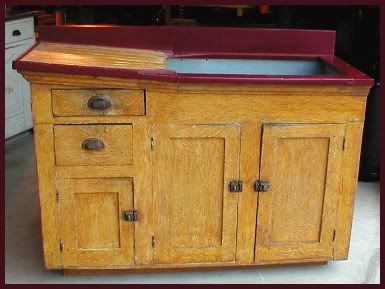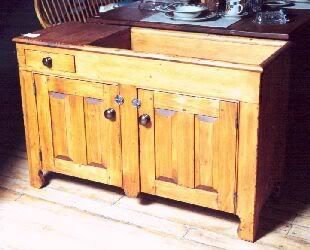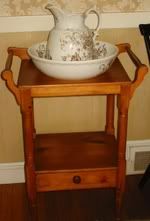Trial testimony Alice Russell page 391:
Q. Will you state what you saw after you returned?
A. I went into the kitchen, and I saw Miss Lizzie at the other end of the stove; I saw Miss Emma at the sink. Miss Lizzie was at the stove, and she had a skirt in her hand, and her sister turned and said, "What are you going to do?" and Lizzie said, " I am going to burn this old thing up; it's covered with paint."
---------------------------------------------------------------------
Page 410:
Q. And this conversation with Emma, you may state it again, if you please, so there will be no doubt about it.
A. Emma turned around from the sink and she says " What are you going to do?" and Lizzie says " I am going to burn this old thing up. It is covered with paint."
---------------------------------------------------------------------
Bridget Sullivan trial testimony, page 197:
( in reference to dinner Wednesday night)
Q. Did you clean up the dishes after dinner? or Mrs. Borden?
A. Mrs. Borden put the dishes out in the kitchen from the dining room.
Q.You washed them?
A. Yes, sir.
---------------------------------------------------------------------
page 222:
Q. After you had completed your breakfast what did you do?
A. I took the dishes off out of the dining-room and brought them out in the kitchen and began washing them.
Q. Did you complete the washing of the dishes before any one else appeared?
A. No sir.
Q. Who next appeared?
A. The next I remember to see was Mr. Borden and Mr. Morse going out the back entry -- the back door.
Q. Did Mr. Morse return after the two went out to the screen door?
A. No sir, he went out.
Q. Did Mr. Borden return at that time?
A. Yes sir.
---------------------------------------------------------------------
page 224:
"Q. After Mr. Borden went upstairs did you continue to remain in the kitchen until some one else came, or did you go away?
A. No, sir, I was washing the dishes at the sink, and Miss Lizzie came through.
Q. About how long was it after Mr. Morse went that Miss Lizzie Borden came?
A. I don't know how long it was. It was no more than five minutes, I don't think. I don't remember how the time was.
Q. When she came, into which room did she come? Where did you first see her?
A. The kitchen.
Q. From what room did she come?
A. From the sitting-room.
---------------------------------------------------------------------
page 226:
Q. What did you go to doing when you came back into the kitchen?
A. I completed washing my dishes. Some of them was washed, and all of them wasn't, and I finished them and took them in the dining room, and I got them completed, and Mrs. Borden was there.
---------------------------------------------------------------------
Trial testimony of Emma Borden page 1542+:
Q. When did you next see the Bedford cord dress?
A. Sunday morning, I think, about nine o'clock.
Q. Now will you tell the Court and the Jury all that you saw or heard that morning in the kitchen?
A. I was washing dishes, and I heard my sister's voice and I turned round and saw she was standing at the foot of the stove, between the foot of the stove and the dining room door. This dress was hanging on her arm and she says,"I think I shall burn this old dress up." Do you wish me to go on?
Q. Go right along.
A.I said, " why don't you," or " you had
Page 1543
better," or " I would if I were you," or something like that, I can't tell the exact words, but it meant, --- Do it. And I turned back and continued washing the dishes, and did not see her burn it and did not pay any more attention to her at that time.
I realized, Emma and Bridget very well could have been at the 'sink' in the kitchen. I was thinking in terms of today's hot and cold running water, even though I knew that sink in the Borden home produced only cold water. Which means the water had to be heated on the kitchen stove in order to wash the dishes. Sometimes more than one kettle of water had to be heated. Kettles of water were usually kept on the stove to keep them warm for such things. So the water would have been taken from the sink in the sink room into the kitchen to be heated on the stove.
My aunt owns a wonderful old dry sink that came with a house that she bought. A victorian dry sink. These were wash stands that held basins of water and were used for doing dishes and things of this nature when a direct water supply wasn't available. I realized the Borden's may have owned a dry sink, they were pretty common in victorian homes. It would also be practical if they did, and it would make sense. The water could be heated on the stove, and then taken a few steps to the dry sink to do the dishes instead of carrying them back down the hall into the sink room to be dumped into a sink. The dishes would not have to be carried back and forth from the sink room to be washed and put away. It could also explain why so many witnesses seem to testify there was a sink in the kitchen. Perhaps there was.
--------------------------------------------------
Made for the kitchen beginning early in our nation's history and still being reproduced, the "dry sink" was utilitarian and provided a work surface for preparing food or washing dishes and cookware. There was typically no water supply, so basins and bowls contained wash water to be discarded later out the back door. The dry sink was basically a cabinet piece with a boxed structure on top, or perhaps a back and sides to contain splashing. Some had small drawers under the surface for tools or soap. The "sink" portion of the piece was simply a wooden box sometimes lined with tin, zinc, or other metal for additional protection. At times, if there were a well or water reservoir under the floorboards of the kitchen, a pump would be attached. The dry sink would be located under the pump head and the piece was no longer "dry". In that case, a bucket or kettle could be set in the sink to pump water for heating, or, if a water-proof "sink" had been mounted on top, it could become a receptacle for the water which could be drained to a bucket below. (Waste water was sometimes re-used to scrub floors.)
http://www.depotantiques.com/index.php?id=26
-------------------------------------------------------------------------
dry sink
NOUN: A wooden cabinet that supports a wash basin not connected to a water supply.
http://www.bartleby.com/61/62/D0406250.html
------------------------------------------------------------------------
Before indoor plumbing, many people owned pieces of furniture called dry sinks. Found in kitchens and bedrooms, they held a wash basin and a pitcher of water. Michael Ogle is an antiques dealer and expert on authentic American furnishings and he shares the history of these highly collectible pieces and how they can be incorporated into the decor of almost any room of a country home.
Dry sinks were common in 18th- and 19th-century homes. The top portion acted as a barrier to keep water from spilling onto the floor.
They are found in many rooms in today's country homes and can be used in an entryway, bathroom and as a server in a dining room.
They can be found in a rainbow of colors with blue being the most sought-after hue. Bittersweet, a red-orange color, is also rare and is indicative of sinks from New York.
Ogle says dry sinks can be purchased from $1,000 on up to the many thousands.
http://www.hgtv.com/hgtv/dc_furnishings ... 14,00.html
-----------------------------------------------------------------------
http://www.folkpark.com/collections/Ame ... /Dry_Sink/
---------------------------------------------------------------------------
http://www.oregonlink.com/mission_mill/ ... space.html
--------------------------------------------------------------
http://www.purdumantiques.com/dry_sinks.htm
--------------------------------------------------------
http://www.housenotsobeautiful.com/Articles/sink.html








